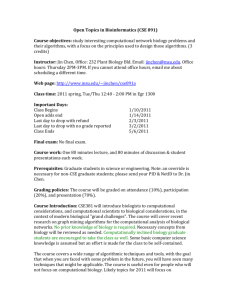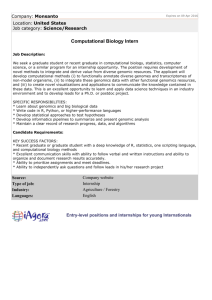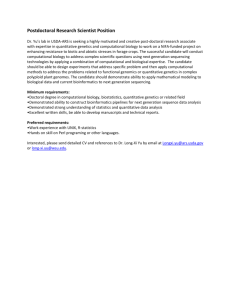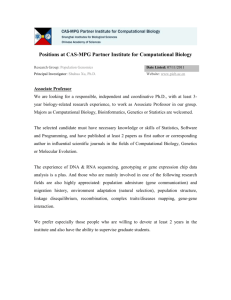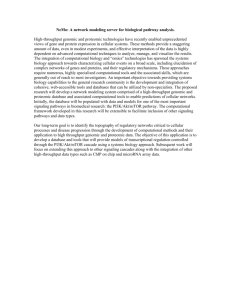minchul_kang - University of South Alabama
advertisement
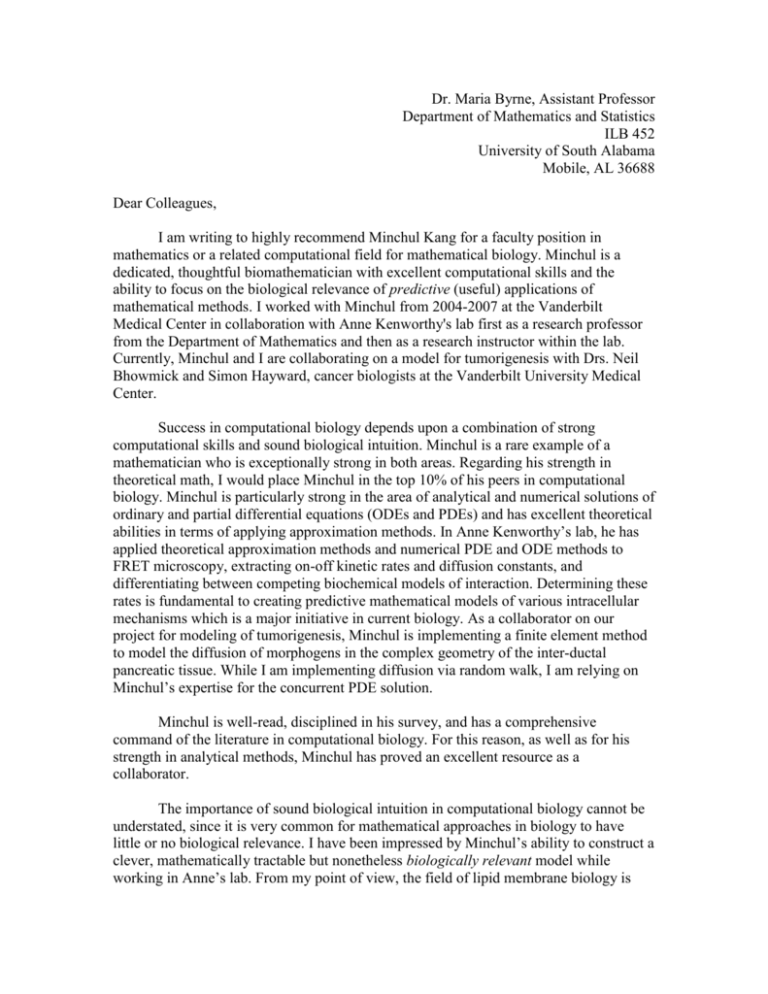
Dr. Maria Byrne, Assistant Professor Department of Mathematics and Statistics ILB 452 University of South Alabama Mobile, AL 36688 Dear Colleagues, I am writing to highly recommend Minchul Kang for a faculty position in mathematics or a related computational field for mathematical biology. Minchul is a dedicated, thoughtful biomathematician with excellent computational skills and the ability to focus on the biological relevance of predictive (useful) applications of mathematical methods. I worked with Minchul from 2004-2007 at the Vanderbilt Medical Center in collaboration with Anne Kenworthy's lab first as a research professor from the Department of Mathematics and then as a research instructor within the lab. Currently, Minchul and I are collaborating on a model for tumorigenesis with Drs. Neil Bhowmick and Simon Hayward, cancer biologists at the Vanderbilt University Medical Center. Success in computational biology depends upon a combination of strong computational skills and sound biological intuition. Minchul is a rare example of a mathematician who is exceptionally strong in both areas. Regarding his strength in theoretical math, I would place Minchul in the top 10% of his peers in computational biology. Minchul is particularly strong in the area of analytical and numerical solutions of ordinary and partial differential equations (ODEs and PDEs) and has excellent theoretical abilities in terms of applying approximation methods. In Anne Kenworthy’s lab, he has applied theoretical approximation methods and numerical PDE and ODE methods to FRET microscopy, extracting on-off kinetic rates and diffusion constants, and differentiating between competing biochemical models of interaction. Determining these rates is fundamental to creating predictive mathematical models of various intracellular mechanisms which is a major initiative in current biology. As a collaborator on our project for modeling of tumorigenesis, Minchul is implementing a finite element method to model the diffusion of morphogens in the complex geometry of the inter-ductal pancreatic tissue. While I am implementing diffusion via random walk, I am relying on Minchul’s expertise for the concurrent PDE solution. Minchul is well-read, disciplined in his survey, and has a comprehensive command of the literature in computational biology. For this reason, as well as for his strength in analytical methods, Minchul has proved an excellent resource as a collaborator. The importance of sound biological intuition in computational biology cannot be understated, since it is very common for mathematical approaches in biology to have little or no biological relevance. I have been impressed by Minchul’s ability to construct a clever, mathematically tractable but nonetheless biologically relevant model while working in Anne’s lab. From my point of view, the field of lipid membrane biology is fraught with highly technical experimental tools, noisy data and an inconsistent, confusing literature. Minchul’s ability to navigate through these conditions to arrive at a mathematically rigorous model with immediate biological applications in a relatively short time has verily amazed me, and I do not hesitate to include Minchul among the top 2 or 3 computational biologists I have met regarding his ability to understand the biology behind a computational biology problem. Minchul will make an excellent research biomathematician wherever he decides to reside. As a non-native English speaker Minchul has good English speaking skills, able to clearly discuss and convey his thoughts on a variety of topics, and his English comprehension is excellent. In my opinion Minchul still needs to apply more effort to improve his diction. I expect that Minchul will apply equal dedication to teaching that he has applied to his research, and Minchul’s speaking skills will have a chance to improve in even one semester of teaching. I predict that from the start, Minchul would be a dedicated and conscientious teacher, and popular with the students. His public presentations, sprinkled with diffident humor and burgeoning showmanship, indicate he has the potential to be an excellent teacher. Finally, I would like to add that Minchul is a pleasure to work with. He is a very well-rounded individual, with many interests outside of his research and an above average amount of social charisma. He has had the effect of increasing morale in the lab ever since he began working there in 2005 with his unselfconscious, easy sense of humor and his dependably positive outlook. While I hope you will choose to include him in your group for his superior skills in computational biology, I think that you and his students will enjoy having him in your department as a personable colleague and teacher. Sincerely, Maria A Byrne
